 |
| the lucky one 6x6 acrylic on canvas ©the enchanted easel 2016 |
 |
| the lucky one 6x6 acrylic on canvas ©the enchanted easel 2016 |
 LEE & LOW BOOKS celebrates its 25th anniversary this year! To recognize how far the company has come, we are featuring one title a week to see how it is being used in classrooms today and hear from the authors and illustrators.
LEE & LOW BOOKS celebrates its 25th anniversary this year! To recognize how far the company has come, we are featuring one title a week to see how it is being used in classrooms today and hear from the authors and illustrators.
Today, we’re celebrating one of our most popular and bestselling titles: Sam and the Lucky Money. We love this book because it accomplishes so many things at once: it teaches about kindness, generosity, and gratitude; it lets readers experience Chinese New Year in New York’s Chinatown; and it teaches readers about special Chinese New Year traditions.
Featured title: Sam and the Lucky Money
Author: Karen Chinn
Illustrators: Cornelius Van Wright and Ying-Hwa Hu
Synopsis: Sam is excited to spend the Lucky Money his grandparents gave him for Chinese New Year during a trip to Chinatown, but learns that sometimes it is better to give than to receive.
Awards and honors:
Other Editions: Did you know that Sam and the Lucky Money also comes in a Spanish and a Chinese edition?
Sam and the Lucky Money Chinese Edition
Purchase a copy of Sam and the Lucky Money here.
Resources for teaching with Sam and the Lucky Money:
Other Recommended Picture Books for Teaching About Generosity and Giving:
The Can Man by Laura E. Williams, illus. by Craig Orback
Lend a Hand: Poems About Giving by John Frank, illus. by London Ladd
Have you used Sam and the Lucky Money? Let us know!
Celebrate with us! Check out our 25 Years Anniversary Collection.
 |
| "the lucky one" 6x6 acrylic on canvas ©the enchanted easel 2016 |
The Chinese New Year is tomorrow !!! The WWW is buzzing with great facts, books and actitivities families can do surrounding China and this wonderful holiday. Let’s dig into Exploring China with Great Kidlit Books. Here are some of my top picks this week:
Something to Do
Time to create your own Year of the Monkey Bookmark Craft thanks to Mia at @PragmaticMom
I love this Chinese New Year Crafts – Paper Plate Dragon from Fun Craft Kids
In honor of The Year of the Money-here are 25 Mischievous Monkey Crafts for Kids from Southern Girl Ramblings
Good Reads and Booklists
Picture books celebrating the Chinese New Year from Youth Literature Reviews
Learn about China with these books about China and Chinese New Year from No Time for Flashcards
12 Books to Explore CHINA for Chinese New Year
Past JIAB Reviews and Extension Activities
19 Books Celebrating China with Author Demi
Family Book Festival: Beth Cheng and The Monkey King
Cooking with Books: Lucky Birthday Noodles {Guest Post by Jodie from Growing Book by Book}
Starry River of the Sky by Grace Lin
Where The Mountain Meets The Moon by Grace Lin
Grandfather Tang’s Story: Storytelling with Tangrams
Little Leap Forward-A Boy in Bejing by Guy Yue & Clare Farrow

Free Gift-Multicultural Activities for kids
Don’t forget to grab my FREE Gift to YOU! Available for only a short time. Grab your copy HERE.
MCCBD subscribe
Does Multicultural Children’s Book Day 2017 sound like something you would like to get involved in? Sign up for our free newsletter and stay in the loop on contests, book reviews, author visits, event details and giveaways!
The post Weekend Links: Happy Chinese New Year with Great Kidlit Books appeared first on Jump Into A Book.
Add a Comment
The Chinese New Year begins on 8 February, ushering out the year of the sheep (or goat, or ram) and bringing in the year of the monkey. People in China will enjoy a week-long vacation and will celebrate with dragon dances and fireworks. Given the financial fireworks emanating from China, this is a good time to briefly review some of the major economic news coming out of the Middle Kingdom.
The post Happy new year, China: Recent economic booms and busts appeared first on OUPblog.
2016 Chinese New Year is Monday, February 8th and it’s the year of the Monkey. How can you celebrate with students?
Cross-Curricular Activities
Here are some ideas to help you and your students get involved with reading and writing about the Chinese New Year. Additional ideas can be found in individual book teacher guides and the LEE & LOW Chinese New Year Resource Guide for Teachers.
Art:
Science:
Writing:
Social Studies:
Math:
Books for Chinese New Year
(Download the list as a PDF here).
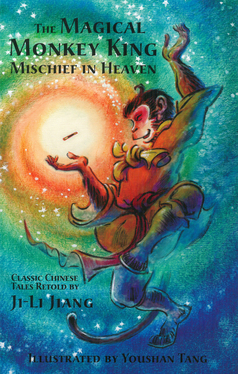 SPOTLIGHT: The Magical Monkey King: Mischief in Heaven This is an adaption perfect for elementary schools of one of China’s favorite classics, Journey to the West. This Monkey is arrogant, bold, clever, and hilarious. Every child in China grows up listening to stories of the irrepressible Monkey King. Join Monkey as he wins his title as King of the Monkeys, studies with a great sage to learn the secrets of immortality, and even takes on the job as a royal gardener in the Kingdom of Heaven.
SPOTLIGHT: The Magical Monkey King: Mischief in Heaven This is an adaption perfect for elementary schools of one of China’s favorite classics, Journey to the West. This Monkey is arrogant, bold, clever, and hilarious. Every child in China grows up listening to stories of the irrepressible Monkey King. Join Monkey as he wins his title as King of the Monkeys, studies with a great sage to learn the secrets of immortality, and even takes on the job as a royal gardener in the Kingdom of Heaven.
Chinatown Adventure A young Chinese American girl is spending the day in Chinatown with her mother. With so many interesting things to buy, how will she spend her money?
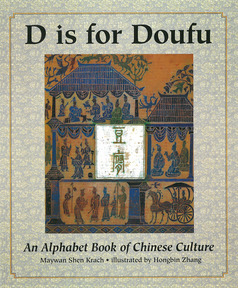 D is for Doufu: An Alphabet Book of Chinese Culture and I Love China: A Companion Book to D is for Doufu This book introduces readers to Chinese culture, beliefs, and legends in today’s context. It explores the meanings of 23 Chinese words and phrases while providing an interesting historical and cultural background.
D is for Doufu: An Alphabet Book of Chinese Culture and I Love China: A Companion Book to D is for Doufu This book introduces readers to Chinese culture, beliefs, and legends in today’s context. It explores the meanings of 23 Chinese words and phrases while providing an interesting historical and cultural background.
 Golden Dragon Parade Chinese New Year is here. Come along to the Golden Dragon Parade.
Golden Dragon Parade Chinese New Year is here. Come along to the Golden Dragon Parade.
 Sam and the Lucky Money Sam can hardly wait to go shopping with his mom. It’s Chinese New Year’s day and his grandparents have given him the traditional gift of lucky money. Yet, Sam discovers that sometimes the best gifts come from the heart.
Sam and the Lucky Money Sam can hardly wait to go shopping with his mom. It’s Chinese New Year’s day and his grandparents have given him the traditional gift of lucky money. Yet, Sam discovers that sometimes the best gifts come from the heart.
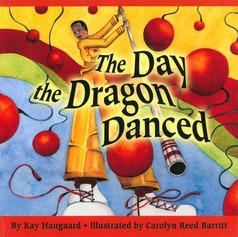 The Day the Dragon Danced Sugar and her Grandma are going to the Chinese New Year’s Day parade, but Grandma is skeptical about New Year’s in February and scary dragons.
The Day the Dragon Danced Sugar and her Grandma are going to the Chinese New Year’s Day parade, but Grandma is skeptical about New Year’s in February and scary dragons.
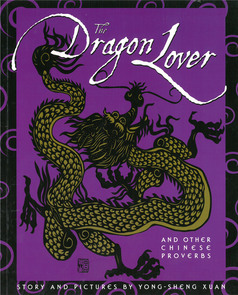 The Dragon Lover and Other Chinese Proverbs These proverbs are used in everyday Chinese life to illustrate moments of humor or clarity in our actions. Each of the five stories collected here feature animals that help readers shed light on the truths of human nature.
The Dragon Lover and Other Chinese Proverbs These proverbs are used in everyday Chinese life to illustrate moments of humor or clarity in our actions. Each of the five stories collected here feature animals that help readers shed light on the truths of human nature.
 The Monster in the Mudball When Jin’s little brother is kidnapped by the monster Zilombo, Jin teams up with Chief Inspector of Ancient Artifacts Mizz Z on the streets of England to find him and defeat the monster.
The Monster in the Mudball When Jin’s little brother is kidnapped by the monster Zilombo, Jin teams up with Chief Inspector of Ancient Artifacts Mizz Z on the streets of England to find him and defeat the monster.
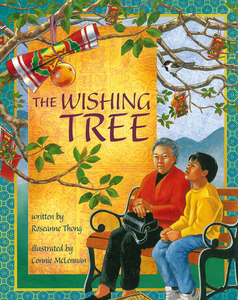 The Wishing Tree Every Lunar New Year, Ming and his grandmother visited the Wishing Tree. Grandmother warned him to wish carefully, and sure enough, Ming’s wishes always seemed to come true. But one year—when Ming made the most important wish of his life—the tree let him down.
The Wishing Tree Every Lunar New Year, Ming and his grandmother visited the Wishing Tree. Grandmother warned him to wish carefully, and sure enough, Ming’s wishes always seemed to come true. But one year—when Ming made the most important wish of his life—the tree let him down.
(Download the full book list and activities as a PDF here).

Jill Eisenberg, our Senior Literacy Specialist, began her career teaching English as a Foreign Language for second through sixth grade in Yilan, Taiwan as a Fulbright Fellow. She went on to become a literacy teacher for third grade in the Bay Area, CA as a Teach for America corps member where she became passionate about best practices for supporting English Language Learners and parent engagement. In her column for Lee & Low’s The Open Book blog, she offers teaching and literacy tips for educators.
 |
| Moni Eginas; magical land of goats and peacocks |
Happy Lunar New Year. This week we’re celebrating Chinese New Year. Usually this means we go to our friends The Deng’s House and have an enormous feast and fireworks. This year however the Dengs are actually home in China, celebrating with their family and friends in Beijing. We want to wish all of you a very Happy Chinese New Year.
Today we are celebrating Chinese New Year with a wonderful new book, The Pandas and Their Chopstic ks by author/illustrator Demi.
ks by author/illustrator Demi.
Demi has put together a collection of 10 wonderful animal fables from China. Beautifully and cleverly illustrated and simply told, these tales will become an easy reach when searching for something quick to read with the family which holds great substance. Demi adapted these whimsical animal stories from traditional Asian folktales, these lighthearted stories have a universal appeal and will provide valuable lessons for little hearts and mins to absorb.
After reading this book, my son asked me if we are a “fabalistic” family ? Meaning; do we believe in fables and do we find them to be true ? He was so curious he even made up his own word.
Discover inside the pages of this engaging collection of fables how panda learns the importance of sharing, how turtle discovers the danger of being proud, and how everyone, including tiny hummingbird, has their part to play in life.
This is Aesop Fables meet China at its absolute best. Don’t miss this one. It’s a Great Read !!!
Working with fables enables children to:
Build Literacy. The short and precise structure and language of fables have a wonderful effect on young readers and writers. Children learn to recognize predictable patterns in the structure of the fables as well as being able to apply this to their own writing.
Build Ethical and Moral Development. Working with fables lets children feel comfortable exploring and reflecting on their own values as well as developing critical thinking skills about ethical issues.
Build Discussion Skills. Through discussion and debate, children learn to listen to each other and express their own opinions about ethical behavior. They can discuss real-life issues using fables as a tool as well as discussing how certain behaviors and outcomes can impact family and school communities at large.
Develop an Understanding of Metaphor. Fables promote higher levels of thinking as children develop their skills at interpreting the meaning of the fable, making inferences and judgments, and creating alternative solutions to problems. Children are challenged to take a specific set of actions which relate to a certain moral outcome.
Translate Ethical Issues into Real Life. Children while reading fables, develop critical thinking skills as they reflect about the events in the stories and how to apply the proverbs to a variety of real world events happening in their lives, communities, or the world at large.
Here are a couple of ideas on how to bring these wonderful fables to life. I’m working on a full cross curriculum adventure kits for The Pandas and their Chopsticks I’ll share with you very soon.
Story Theater
Read the Fable Aloud.
Invite your children to act out the fable you’ve just read to them. Here’s how:
Writing
On a piece of paper give an example from your own life that describes the moral from the fable.
Draw
After writing your own life example go ahead and draw it as well.
Fables are a wonderful tool to teach children about ethics and morals as well as deepen their critical thinking and language skills.
I wish all of you a wonderful Lunar New Year !!! The most common Chinese ways of saying Happy New Year are Gong Xi Fa Cai (Mandarin) and Gong Hey Fat Choy (Cantonese). Even though the pronunciations are a little different, both are written the same way.
The post How do Pandas Eat With 3-Foot Chopsticks? A Chinese Happy New Year with Demi appeared first on Jump Into A Book.
Add a Comment
So 2013 is the year of the snake-- in this case, a black water snake. I'm kind of fond of snakes, so long as they don't bite me-- they're so graceful and smooth. None of the black snakes around us are venomous; mostly they keep down the rodent population and mind their own business. You don't often see them, unless they've found a good sunny rock to bask on.
But for a lot of people, snakes are the stuff of nightmares... and the year of the snake can be a difficult time. The most recent snake years brought u 9/11 and Tiananmen Square... which might lead a snake-phobe to worry that the coming year could be stormy.
But every year has its storms.
What do water and snakes have in common? They both flow. And darkness on the deep doesn't mean you're going down-- sailors navigated by the stars. With any storm, whether you sink or ride it out depends largely on how you trim your sails.
This site recommends focus on discipline and attention to detail for those who want to make progress in creative work... sound advice, whatever year it is!
Today is Chinese New Year! Traditionally, the night before Chinese New Year, Chinese families will gather around and eat dinner together, much like this plate from the LEE & LOW title, Auntie Yang’s Great Soybean Picnic:
Auntie Yang’s Great Soybean Picnic author and illustrator Ginnie and Beth Lo were kind enough to share one of their favorite soybean recipes with us: Mapo Tofu! While not a traditional Chinese New Year dish, the Lo sisters say that “mapo tofu is a Lo family favorite that we eat on the holidays, Christmas, and Chinese New Year.”
MAPO TOFU

Just before serving, remove from heat and add 3 scallions, finely chopped and 2T Chinese Sesame oil, stir and serve.
Enjoy, and feel free to let us know how it turned out!
Further reading
Angelo’s Sosa’s Chilled Edamame and Spring Pea Soup
On Thanksgiving, everyone looks forward to the turkey. Valentine’s Day is the time for chocolate. During Chinese New Year, one of the most popular dish is one called jai, or Buddha’s Delight.
Jai is a vegetarian dish and is eaten on the first day of Chinese New Year to bring good luck. According to Buddhist tradition, no animal or fish should be killed on the first day of the lunar new year, thus, a dish with lots of vegetables is considered purifying.
While most of the ingredients are probably not available at your local grocery store, they can be found at Asian grocery stores in many parts of the country.
Want to try your hand at cooking jai? Here’s a good starter recipe from Vegetarian Recipes and Cooking website, reposted with their permission:
Prep Time: 1 hour
Cooking Time: 10 minutes
Ingredients
1/2 cup bamboo shoots, thinly sliced
2 dried bean curd sticks, soaked for 45 minutes in hot water to soften, cut into 1″ chunks
1/2 cup cellophane noodles, soaked in hot water until soft
6 dried shiitake mushrooms, soaked in hot water until soft (reserve soaking liquid for sauce)
1 carrot, julienned
1/4 cup dried lily buds, soaked in hot water until soft
1 oz. dried fat choy (black “hair” moss), soaked in hot water until soft
1/4 cup canned ginkgo nuts, drained
1/4 cup canned lotus seeds, drained
1/2 cup napa cabbage, thinly sliced
1/4 cup peanuts, roasted
1/2 cup snow peas, julienned
1/2 cup fried tofu, cubed
1/2 cup wheat gluten, thinly sliced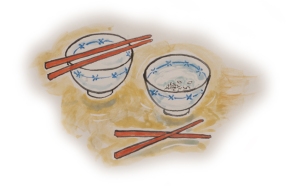
1/4 cup fresh wood ear mushroom, cut into strips (or soak dried wood ears)
1/2 cup bean sprouts
1/2 cup straw mushrooms
1/2 cup lotus root, thinly sliced
1/2 cup arrowroot (a starchy tuber), cooked and diced
1 TB peanut or vegetable oil
For sauce
1/4 cup mushroom soaking liquid or vegetable stock
1.5 TB Shaoxing wine
1 tsp ginger, minced
1 TB vegetarian oyster sauce
1 TB light soy sauce
1 tsp dark soy sauce
1/2 tsp sugar
1/2 tsp sesame oil
1/2 tsp cornstarch
Directions: Heat 1 TB oil in wok or large pan over medium-high heat. Add bean curd sticks, cabbage, snow peas, mushrooms, and carrots and stir-fry for 2 minutes. Mix sauce ingredients in a bowl, stirring to dissolve cornstarch, and set aside. Add remaining ingredients, except cellophane noodles and peanuts, to wok, along with sauce, and stir to combine. Simmer until bubbly and slightly thickened, about 5 minutes, stir in cellophane noodles and peanuts, and serve.
Happy cooking! And Happy Chinese New Year!
Further reading:

The Year of the Snake slithers in this weekend but have no fear! Ancient Chinese wisdom says a snake in the house is actually a good omen because it means that your family will not starve. The sixth sign of the Chinese Zodiac, the snake represents wisdom, intelligence and self-control. The snake also represents the ability to strike at will, quickly and powerfully. The Year of Snake promises to be a time of steady progress and attention to detail. Focus and discipline will be necessary for all of us to achieve what we set out to create.
Chinese New Year is the longest and most important festival in the Chinese calendar and celebrations take place around the world . What better way to get into the spirit by reading some Chinese New Year children’s books! Here are a few books we’ve blogged about that we would definitely recommend:
Tales from the Chinese Zodiac series by Oliver Chin,
The Great Race / The Story of the Chinese Zodiac by Dawn Casey, illustrated by Anne Wilson;
The Day the Dragon Danced by Kay Haugaard, illustrated by Carolyn Reed Barritt
Fang Fang’s Chinese New Year by Sally Rippin
The Race for the Chinese Zodiac by Gabrielle Wang, illustrated by Sally Heinrich
Year of the Dog and Year of the Rat by one of my favorite authors Grace Lin. Be sure to visit Grace’s blog t0 read about her plans for bringing in the New Year with her daughter Rain Dragon and to get some New Year crafts suggestions.
My Mom Is a Dragon and My Dad is a Boar and Hiss! Pop! Boom! by Tricia Morissey
Happy, Happy Chinese New Year! written and illustrated by Demi. Read our interview with Demi here and see our gallery of her stunning illustration work here.
And here’s a special kidlit New Year celebration for those of you who live in San Jose, CA, USA. Children’s author Oliver Chin will be reading from his new book The Year of the Snake: Tales from the Chinese Zodiac, on Feb. 19th at the Joyce Ellington Branch library. Details here.
This Sunday is Chinese New Year and that means firecrackers, food, and family! You can greet someone by saying Gong Xi Fa Cai (Mandarin) or Gung hay fat choy (Cantonese), which means “wishing you prosperity in the coming year.”
Chinese New Year is based on the lunar calendar (the moon’s orbit around the Earth), therefore the actual day varies year to year. Many families will prepare for the new year by cleaning the house, shopping for new clothes, buying food to prepare new year meals, and stocking up on red envelopes to put lucky money in. Once the new year arrives, celebratory events continue for the next 15 days, including parades, feasting, red lanterns, and red paper cutouts and calligraphy.
One of the most exciting (and noisy!) activities is the firecrackers. According to old Chinese mythology, there was a mythical beast called Nian who terrorized villages and ate their livestock and crops on the first day of the New Year. One year, villagers noticed Nian running away from a child wearing red, and they realized that Nian was afraid of the color red. That is why the color red is used during Chinese New Year. Firecrackers are used to scare away Nian.
2013 will be the Year of the Snake. People born under this sign are thought to be very intuitive and insightful, and they tend to approach problems rationally and logically. There are 12 animals in the Chinese zodiac, starting with the Rat and ending with the Pig. The legend of the Chinese Zodiac began long ago with the Jade Emperor. He wanted a way to measure time, so he told all the animals on Earth that there would be a swimming race.
The first twelve animals to cross the river would have a year of the zodiac named after them. The Rat and the Cat were scared they wouldn’t make it, but being the clever animals that they were, they asked the Ox if they could ride across on his back and the Ox agreed. Just as they were approaching the finish line, the Rat pushed the Cat into the river and jumped off the Ox’s back to race toward the finish line. This is why the Rat is the first animal in the zodiac and it also explains why cats hate rats and always chase them.
We wish everyone a joyous and prosperous 2013! Check out this heartwarming story to keep the Chinese New Year celebration alive!
Further reading:
No, I am not over the Year of the Dragon yet... Many more holidays to go. Here is my quickie sketch to celebrate.
Easter in the Year of the Dragon... Not sure why I added the wings... I think for more dragon feel but they had to be furry.
 I hang my head in shame - I have been remiss this year. I haven't posted one thing on Chinese New Year AND with two daughters born in China - that is just not right! So I'm going to make it right - and direct you to a wonderful post that one of my favorite bloggers has put together - don't miss it!!
I hang my head in shame - I have been remiss this year. I haven't posted one thing on Chinese New Year AND with two daughters born in China - that is just not right! So I'm going to make it right - and direct you to a wonderful post that one of my favorite bloggers has put together - don't miss it!!
Jama's Alphabet Soup - "A Little Chinese Take-Out"
I have been really swamped and am tardy in posting. So, I doodled this today while waiting for my giant files to save. Happy Chinese New Year!
Last week after I posted about Shaun Tan‘s book The Arrival being set to a musical score, I spent some time searching the internet to find out about other children’s books which had been set to musical scores. Interestingly enough the first event that came up on my search was for a January 2012 production of another Australian author’s book: The Race for the Chinese Zodiac by Gabrielle Wang. I had been just been in contact with Gabrielle a few weeks ago when we posted our review of her book The Garden of Empress Cassia so I quickly sent off another email to her and she provided me with the following details on the event which is taking place at the Melbourne Recital Centre in Melbourne, Australia:
THE RACE FOR THE CHINESE ZODIAC
Date: 11 am, Sat. Jan 21. For ticket info click here.
Based on the picture book The Race for the Chinese Zodiac by Gabrielle Wang (author), Sally Rippin (illustrator) and Regina Abos (designer) and inspired music by the Australian Chinese Music Ensemble, led by Wang Zheng-Ting, this concert will delight and amaze children and their families as they enjoy one of China’s favourite fables.
The Jade Emperor has declared a great race: the first animals to cross the river will win a place in the Chinese Zodiac. Thirteen animals line up along the shore. But there are only twelve places to be won. Who will miss out?
The story of how the animals of the Chinese zodiac came to be is told through music and projected images. Learn about the story behind the Rat, the Snake, the Horse and other endearing characters of this traditional tale and discover the sounds of Chinese instruments.
CHINESE PAINTING WORKSHOPS FOR CHILDREN
Date: Sat. Jan 21, Sun. Jan 22. Click here for times and ticket info
Gabrielle studied Chinese painting at the Zhejiang Academy of Fine Art in Hangzhou, China. In this workshop she will teach children the four treasures of the painting studio and the basics of Chinese brush painting with plenty of hands on practice. Come join Gabrielle and leave with a finished Chinese painting of your own.
DRAGON TALES
Date: Sat. Jan 21 Click here for times and ticket info.
Celebrate the new year of the Dragon by taking a special Dragon tour. Gabrielle Wang, award-winning author of The Race for the Chinese Zodiac, will teach you how to draw these mythical animals, and then make a scale to place on the dragon that will wind up the Chinese Museum’s staircase.
Happy Chinese New Year!
My oldest child, Noah, has long loved the Chinese New Year. He is interested in the culture and loves the Americanized version of the food. So every year, we are sure to plan a Chinese menu for the start of the New Year. He makes sure the family wears red, a custom he learned about in Max Celebrates Chinese New Year. And we try to watch a movie set in China. (This year's selection is Kung Fu Panda.) I think since it is the year of the rabbit, we will probably have to add a new tradition tonight—reading this book. It is fitting, don't you think?
This year, the Chinese New Year begins today, February 3rd, and people all around the world will be ringing in the year of the Rabbit. Oxford Chinese Dictionary editor Julie Kleeman shares some insight into the traditions associated with the Chinese New Year celebrations.
The Spring Festival
Chinese New Year, or the Spring Festival (春节 chunjie) is a fifteen-day celebration beginning on the second new moon after the winter solstice and ending on the full moon fifteen days later.
Sounds complicated? That’s because when marking traditional holidays the Chinese still use a lunisolar calendar, a system that incorporates elements of the lunar calendar with those of the solar calendar.
The Oxford Chinese Dictionary boasts a centre section that contains, among a host of useful lists including those containing Chinese measure words, kinship terms, ethnic groups, SMS abbreviations and a chronology of Chinese historical and cultural events, a page dedicated to Chinese festivals and holidays, featuring brief descriptions of each event and its corresponding date in the lunar calendar.
The list kicks off with 正月初 – the first of the first lunar month, i.e. the New Year, or 春节 chunjie. If the information provided here whets your appetite for more, you can always look up the term itself, and just below the entry for 春节 chunjie you’ll find a handy culture panel on this, the most important of Chinese festivals.
Food
According to the boxed note, 春节 chunjie is a time for families to reunite for a celebratory meal. The main New Year celebrations take place on New Year’s Eve or 除夕 chuxi. This is the biggest of all New Year’s spreads and the dinner is likely to include a veritable feast of delicacies. Chief among them is fish, because 鱼 or yu (the Chinese word for ‘fish’) sounds a lot like 余 or yu (the Chinese word for ‘abundance’).
In northern China no New Year’s Eve is complete without 饺子 (jiaozi), the dumplings, boiled in water, for which northern cuisine is famous. The Oxford Chinese Dictionary contains a culture box dedicated to the popular snack, explaining how it is made and why it is such a staple of the New Year’s feast.
Greetings
One of the most popular greetings at this time of year is 恭喜发财 gongxi facai or ‘may you be prosperous!’ Look up 恭喜 gongxi in the dictionary and you will find 恭喜发财 gongxi facai listed as an example. You will also find a cross-reference to a usage box on popular Chinese greetings or 问候 wenhou that contains other ways of wishing a happy New Year to your Chinese friends.
Spring Festival couplets
Having the dictionary to hand during the Chinese Spring Festival might also help you to decipher 春联 chunlian or ‘Spring Festival couplets’, the black Chinese characters on bright red paper that are pasted up and hung on doorways and storefronts in the run-up to the Chinese New Year.
There are a huge variety of Spring Festival couplets to suit the scenario. Stores generally use couplets that make references to their line of trade, summoning in good fortune in businesses, or a good reputation. At family homes, couplets usually contain messages that invite good luck and happiness for the coming year.
Each couplet is made up of two lines of verse called the “head” and “tail”, which correspond with one other phonologically and syntactically word-for-word and phrase-for-phrase. The “head” is posted on the right side of the front door and the “tail
[...] On this blog , I found interesting facts on the customs, features of people born in the year of Snake, Nian the mythical monster, why are drums and firecrackers inevitable. Therefore in the vox pop I may ask people do they know that people born in the Year of Snake tend to be intuitive and logical as well as that red colour and firecrackers are used to scare away the mythical beast. [...]
[...] Looking Past the Cover • Children's Book Publishing • Diversity and Race • Conversation « What is Chinese New Year? [...]
[...] What is Chinese New Year? [...]